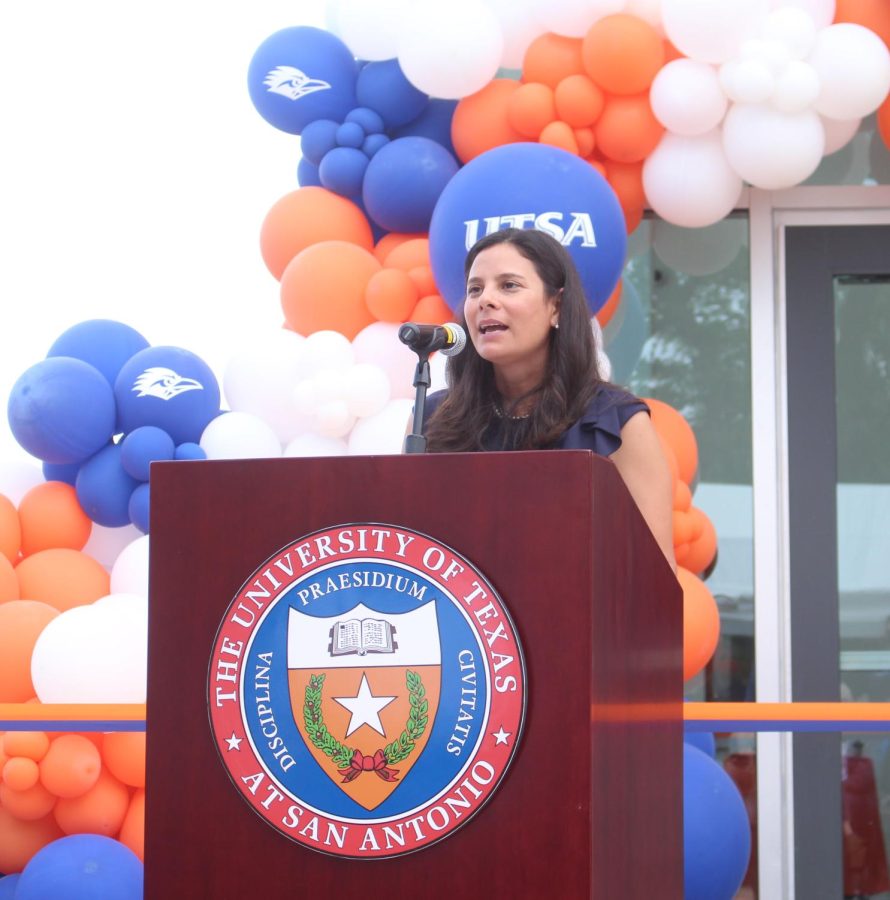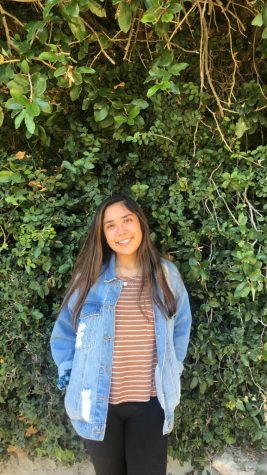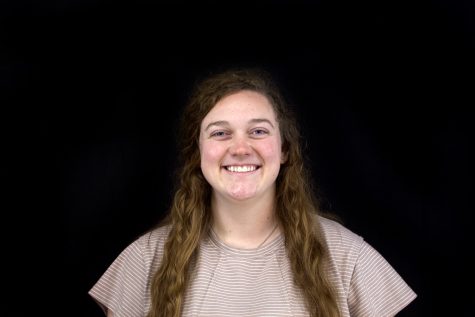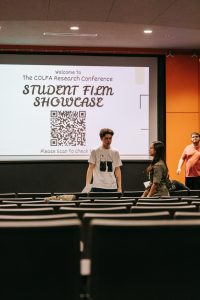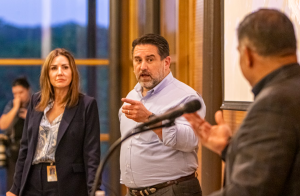Dr. Campos named a finalist for Athletic Director of the Year
Lisa Campos speaks at the grand opening of UTSA’s Roadrunner Athletics Center of Excellence last year. The completion of the facility is just one of many advancements for UTSA that has occurred under Campos’ watch as the Athletic Director of the university.
April 19, 2022
Dr. Lisa Campos, the vice president of athletics and athletic director, is a finalist for Sport Business Journal Athletic Director of the Year. The publication has a committee that observes collegiate athletics and identified five finalists for the work that has been happening within their athletics department.
“For me, the credit always goes to our student-athletes and our coaches, and to recognize what an incredible year UTSA has had this year is really humbling and I’m really honored,” Campos said. “Just because I’m the leader, I get the recognition that is really all about our student-athletes and our coaches and just again, I am really honored that they recognized UTSA amongst some Power Five schools.”
Campos has maintained her role for four years. As Athletic Director, she oversees the division of athletics for the university, with over 150 staff members and coaches and over 350 student-athletes. She described her role as diverse with a focus on the student population.
“It is so multifaceted. We have a lot of constituents including, first and foremost our student-athletes, our coaches, our staff,” Campos said. “We serve the student population, we serve faculty, we serve alumni, we serve donors. At a state-level legislators are often curious about athletics.”
“I didn’t list out everything, but from managing the budget to fundraising to leading our coaches to ensure that our student-athletes have all the resources that they need to be competitive on the field, but also to be competitive academically and then to learn life skills throughout their four years as an undergrad at UTSA,” Campos added.
Despite the laundry list of tasks, responsibilities and oversights, Dr. Campos says her biggest source of fulfillment is watching students grow and develop.
“From meeting an 18-year-old prospective student and their parents, to seeing them come to UTSA watching the ups and downs of their career as a student-athlete and as a student, to them graduating is really what’s the most fulfilling,” Campos said. “We talk about that in our department all the time. If it weren’t for students, we wouldn’t be here. So that’s really the most exciting part for me is interacting with our students. And watching them grow from freshman to seniors.”
With the success of the football team, the transfer of those victories to other sports is equally important. Campos described the Roadrunner Game Plan which was meant to create a strategic path for the future of the department.
“We’re intentional about what our students really need to be successful. And so starting with opening up this beautiful facility [the RACE building]. In this building, we now can provide the academic support that our students need and the athletic training support,” Campos explained. “Then it’s hiring the right coaches, having the right support staff, and I think we’ve done a really great job of that and retaining our really great coaches as well.”
“I think we hit a home run with Coach Traylor and he has changed the entire culture of our football program, but you look at some of our other coaches and they are doing the same thing and with our support and the resources that we’re continuing to provide to them and to our student-athletes. It’s a trickle effect,” Campos said. “Our student-athletes have so much pride right now and they feel like true division one student-athletes and winning is contagious as we’re seeing in baseball right now, but you see the momentum that women’s basketball has had. We just hired a new volleyball coach. So it’s really getting the right folks on onboard and providing the support that’s going to help all of us be successful.”
Along the same lines, Campos explained the importance of having the City of San Antonio engaged in Roadrunner Athletics.
“First of all, we promise our student-athletes they’re going to have an exceptional experience and one of those experiences is playing in front of a packed stadium. Whether that’s in baseball, softball, whatever sport it is, there’s nothing more exciting for our coaches or our student-athletes for them to be playing for you all and to be playing for the city,” Campos said. “We’ve really adopted the 210 and that this is our city and we really want to be an integral part in the city providing exposure visibility to San Antonio and to the university. Then when we got accepted into the American Athletic Conference, there is the question of what is your attendance, does your city and does your community support UTSA athletics? So that was also important in that transition.”
Finally, Campos explained what her goals and aspirations were for the department in the years to come. She pointed to her aspirational vision to transform lives as San Antonio’s nationally recognized Division One program.
“That’s what we strive for every day. How do we transform the life of whether it’s a student at UTSA, a student-athlete, or a kindergartner who comes to a sporting event and thinks about college and wants to come to UTSA,” Campos said. “And we want to get San Antonio to really be behind this and at the end of the day, if our focus continues to be on providing for our student-athletes [and] developing them, to be being a part of an integral part of our undergraduate experience, to focus on how we bring visibility, how we bring more credit to our UTSA degrees if we continue to focus on those aspects, little by little, we’re going to continue to elevate.”
“So we’re going to rely on a lot of support from our students and a lot of support from our donors from our community. We’re all going to be in this together,” Campos said. “We have a very proud product in our athletics program that helps the value of your degree, that helps engage our students, that helps retain them and that helps them really be really active.”


